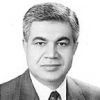US in Afghan a copybook case: How not to fight a war

THE longest war in US history began in October 2001 and is still raging. This asymmetric war will remain a subject of study for analysts and in military academies across the world for years to come. The US was one of 59 countries (or more than a quarter of the world’s nations) to deploy troops to Afghanistan or provide other aids to conduct the war or stabilise the country after the fall of the Afghan Taliban. By the end of 2010, American troops in Afghanistan surged to 100,000.
The 9/11 attacks sent the US government and the American public into a rage. Nobody attempted to contemplate the consequences of military action in a far corner of the world.
Steve Coll, journalist and author of Ghost Wars, has revealed some interesting facts about the Afghan war in his new book, Directorate S.
When war was declared, one of the generals involved claimed that all the forces’ chiefs began asking where Afghanistan was. Then defence secretary Donald Rumsfeld admitted, “In some cases our analysts were working with decades-old British maps.”
The CIA-led and Northern Alliance-assisted invasion was a big boost to American morale. The Taliban made a strategic decision to withdraw to the Pakhtun heartland without a fight. Operation Enduring Freedom suffered 12 military deaths and one CIA officer’s death. The war was declared won. Beyond that, there was no institutional view of what should be done after the Taliban were ousted.
Then president George W. Bush’s attention soon shifted to Iraq, and it remained his primary concern. Troops and funds were hurled into that theatre; little remained to be invested in Afghanistan.
Contrary to their earlier justification for occupying Afghanistan, Rumsfeld wrote in his 2011 memoir, “We did not go there to try to bring prosperity to every corner of Afghanistan.”
Even as early as 2002, a laughable amount was assigned for assistance to Afghanistan. Bush said that they were not fielding a nation-building army. Thirteen thousand troops were considered the right number at the time. Coll states that in 2003, the US National Security Council met to discuss Afghanistan only twice — thus squandering the opportunity to manage a post-conflict Afghanistan.
In 2003, the Taliban started appearing in the same places as they had in 1996. It was akin to watching a rerun of an old movie. By 2006, the Taliban were on the march. By 2009-10, an unpleasant truth had dawned on American analysts — they had lost the war.
“Initially the American investment in post-Taliban Afghanistan was deliberate minimalism, followed by tentative engagement, followed by massive investment only when it was very late to make a difference,” according to Coll. By 2007, Bush changed tack saying that they wanted to establish a stable and democratic Afghanistan. CIA directives, however, still focused on Al Qaeda. They had no orders from the White House to help defeat the Taliban. The situation was further complicated by policy conflicts among the CIA, Pentagon, State Department, Drug Enforcement Administration, Defence Intelligence Agency, and Central Command, writes Coll. The rivalry between the CIA and the army was particularly serious. Stanley A. McChrystal quipped, “They [the CIA] weren’t as good as they thought they were and we [the army] weren’t as bad as they thought we were.”
Overwhelmed by the Iraq invasion and occupation, the Pentagon planners seemed to manage Afghanistan from pieces of scrap paper. “There was not a campaign plan,” indeed, “not a plan, period,” a retired lieutenant general commented. About eight different commands were counted at one point of time reporting to different bosses. The problem of fractured command was a serious one.
The Marines, who were deployed before Gen McChrystal’s arrival, Coll mentions, did not report to him. They reported to their leadership in Central Command, in Florida.
Former president Hamid Karzai may be called a quisling, but deep down he was a nationalist and paranoid about Pakistan’s role in the conflict. He wasted no opportunity to say that to stabilise his country, the American fight lay in (erstwhile) Fata and Quetta. He was also livid about US forces’ night raids and killing of civilians. Once, having dinner with vice president Joe Biden and two other senators, he started “popping off” saying that the US did not care about Afghanistan. “Your country has done nothing to help Afghanistan.” This annoyed everyone. Biden slammed his fist on the table and said, “This conversation, this dinner is over,” then stormed out of the room.
At the end of his second presidential term in September 2014, Karzai delivered a bitter farewell speech, “America did not want peace in Afghanistan because it has its own agenda and goals here.”
It remains to be seen whether the unpredictable President Trump is able to deliver on
this war.
By arrangement with Dawn

